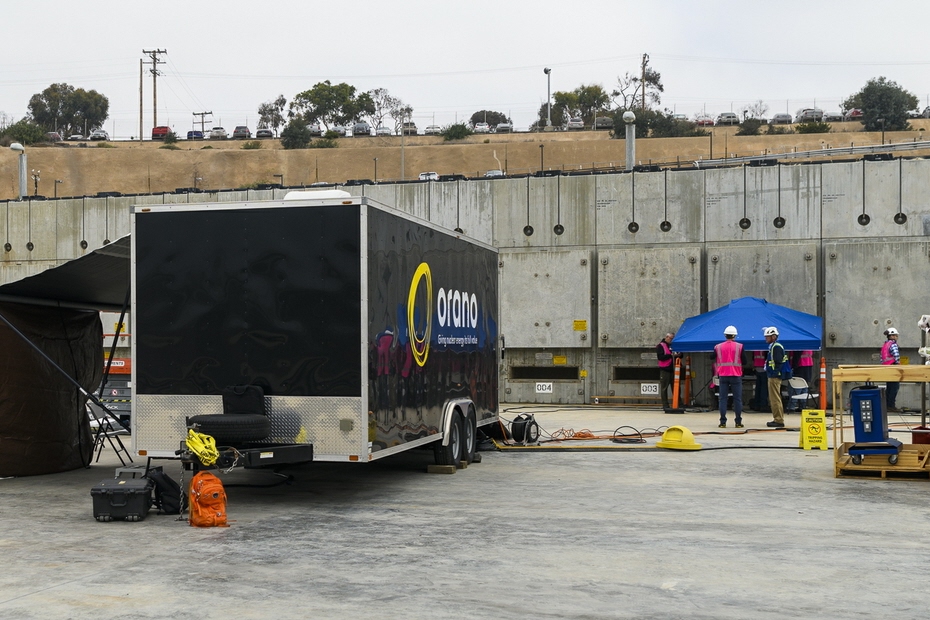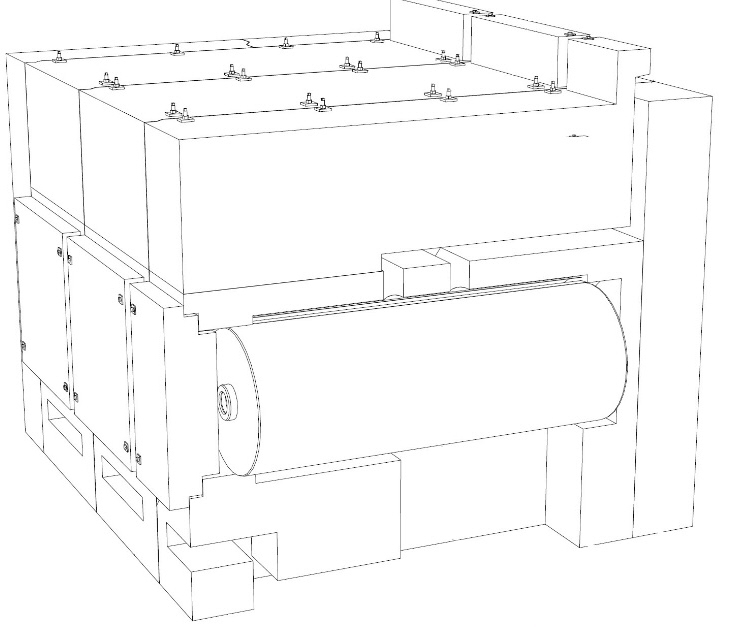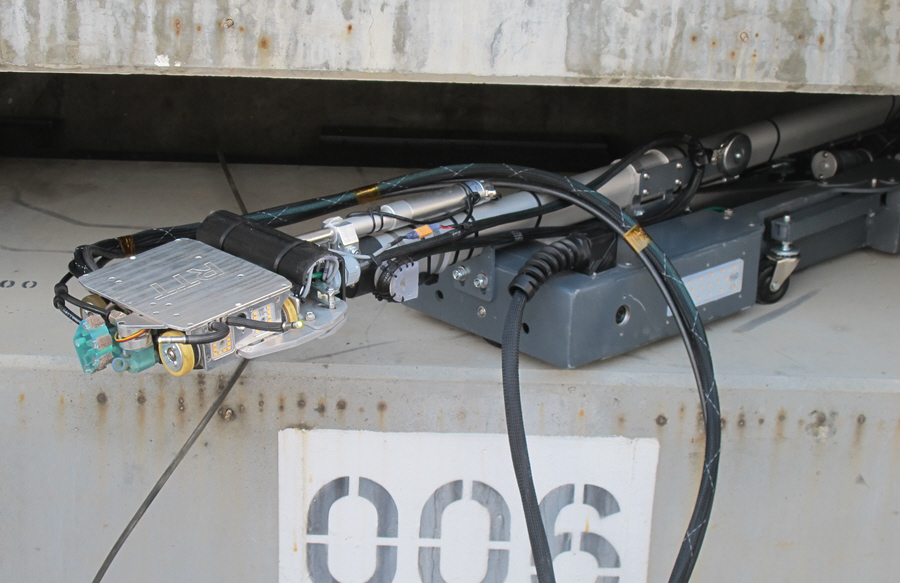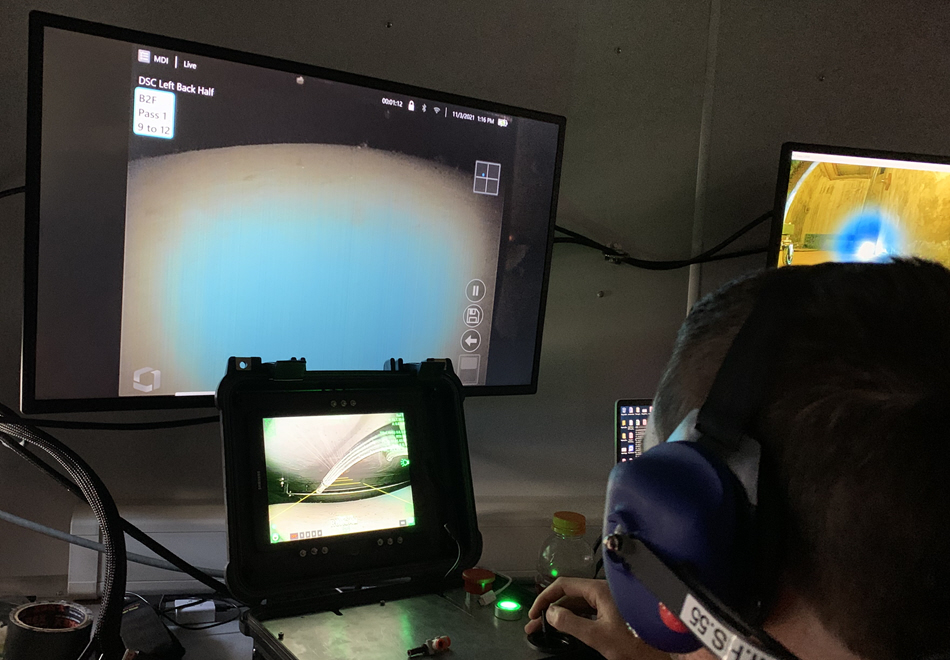Orano Inspection of NUHOMS Used Nuclear Fuel Dry Storage at SONGS Confirms No Degradation Concerns with Metal Canisters or Concrete Modules
BETHESDA, Md., May 18, 2022 – Orano’s recent inspection of stored used nuclear fuel in the San Onofre Nuclear Generating Station’s (SONGS) Advanced NUHOMS® dry storage system revealed no corrosion concerns on the stainless steel canisters placed in storage nearly 20 years ago.
These baseline inspections and positive results fulfilled the requirements for the Advanced NUHOMS system to continue storing used nuclear fuel for up to another 40 years beginning in 2023 under an Aging Management Program (AMP) approved by the Nuclear Regulatory Commission (NRC). The AMP for the NUHOMS system at Southern California Edison’s SONGS facility will require similar inspections every five years.
Orano’s above-ground NUHOMS dry storage systems are designed to operate safely and securely for at least 100 years with an AMP, and provide simplified and convenient access for these periodic inspections.
“Orano and the industry have significantly refined the technology and procedures for inspecting and repairing stored used nuclear fuel canisters,” said Amir Vexler, Orano USA CEO. “Since any degradation on a canister’s surface takes many years to progress, these periodic inspections would find any concern long before it became a problem and we would fix it.”
Orano’s inspection team used three robots. The slim deployment robot carried the smaller crawler robot into the concrete module’s cavity through a front-side ventilation inlet. The deployment robot then raised the crawler robot to the used fuel canister’s side surface, where the crawler detached and adhered with suction while moving and visually examining the canister’s surface. A third robot inside the module provided additional real-time video coverage during the proceedings. The robots also examined the concrete module’s interior surfaces and structures for potential degradation.
Two canisters were selected for these baseline inspections: the first canister loaded with used fuel (the “oldest”) and the canister with used fuel that was generating the relatively lowest amount of heat at the time of loading (the “coldest”). The oldest and coldest canisters are where any corrosion is most likely to first appear.
Orano has performed inspections at four other sites in support of the NRC-approved Aging Management Program for NUHOMS systems that have been in storage for 20 or more years. All of these AMP inspections, including the latest ones at SONGS, have shown no corrosion concerns on the inspected stainless steel canisters in the NUHOMS systems and, therefore, no remediation actions are currently needed.
To ensure shared benefits and lessons learned from Orano’s dry storage operating experience, the company added this recent inspection data as reference information in the Aging Management INPO Database (AMID), hosted for the U.S. nuclear energy industry by the Institute of Nuclear Power Operations.
Chloride-Induced Stress Corrosion Cracking (CISCC)
When first placed in storage, the heat from the stored used fuel prevents atmospheric moisture that may be carrying corrosive salt from condensing on the canister’s surface. Once the canister is cool enough after several decades of storage, the moisture with corrosive salt could condense on the canister and may initiate potential degradation, which itself is a very slow process.
Extensive research and analyses conducted by Electric Power Research Institute (EPRI) and NRC have shown that dry storage of used nuclear fuel is a secure method of interim storage with an Aging Management Program. Those analyses also verified that chloride-induced stress corrosion cracking (CISCC) is the most likely potential degradation that could affect a stainless steel used nuclear fuel canister. The periodic AMP inspections address this concern.
For CISCC to develop on a NUHOMS stainless steel used nuclear fuel storage canister, three criteria must all be present: 1) Corrosive chlorides (salts) are in the air. 2) The canister of used nuclear fuel is cool enough for moist air to condense and evaporate on its surface, allowing corrosion leading to pitting. 3) The canister’s surface becomes pitted and under enough external stress for the pits to connect and form a surface crack, which could eventually progress over decades through the 5/8”-thick canister wall. If any of these three criteria are missing, CISCC cannot occur.
As part of the NUHOMS system’s design and licensing, the NRC-approved Time Limited Aging Analyses and Supplemental Evaluations verified that the likelihood of CISCC on Orano's canisters is a low probability occurrence and would require more than 100 years of unattended degradation to become a concern. At any point in the CISCC degradation, mitigation can successfully restore the canister.
Video: Canister crawler robot inspects a NUHOMS module at SONGS
Video: Process for canister crawler robot inspection inside a NUHOMS module
Learn More: Orano’s NUHOMS dry storage system for used nuclear fuel.

Image: © SCE, The Orano team and equipment trailer at SONGS inspecting the NUHOMS used nuclear fuel dry storage system.

Image: © Orano, Schematic drawing of Orano’s Advanced NUHOMS Horizontal storage module with a stored used nuclear fuel canister.

Image: © SCE, The rectangular canister crawler robot (left) connected to the deployment robot staged on the NUHOMS module’s ventilation slot.

Image: © Orano, Operators in the nearby Orano Trailer control the canister crawler’s motions and camera inspection.
###
